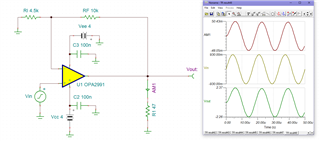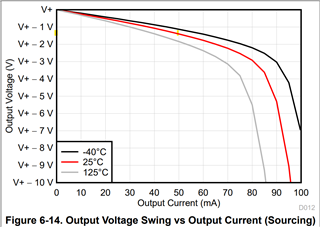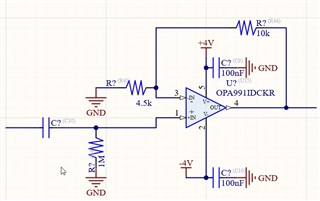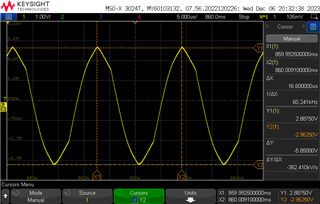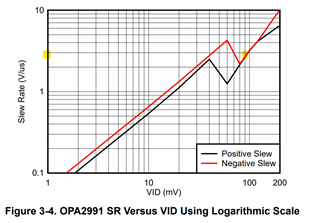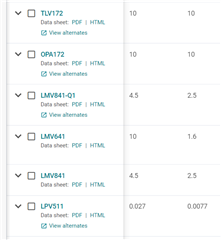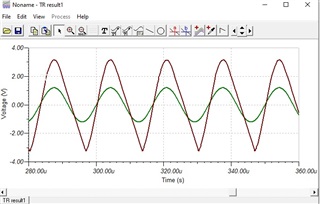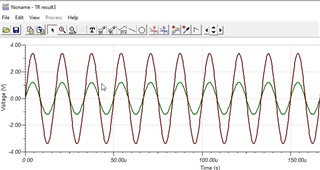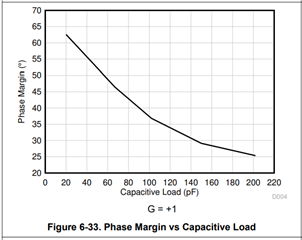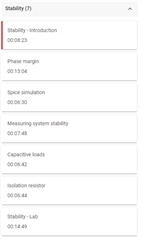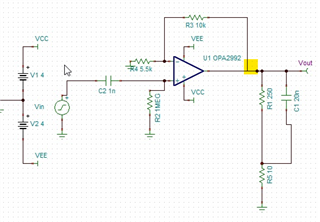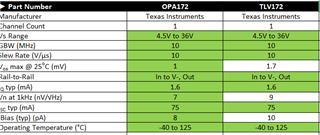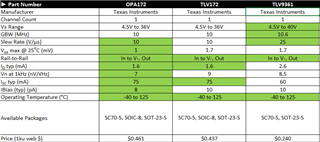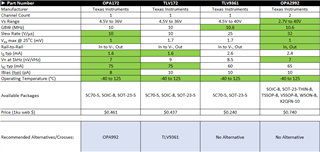Other Parts Discussed in Thread: TLV9161-Q1, OPA172, TLV172, LMV641, LMV841, OPA992, OPA2991, TLV9361, OPA2992
Hi,
We're designing a product with analog amplifier. Signal: AC sinus 60kHz, gain of 3.2, power voltages +-4V, min. load of 40 oHm, max/ load capacity of 1nF, max. output voltage (w/o load) of 6Vpp.
Application: not-inverting OP AMP, feedback of 10k, pull down of 4.5k.
I've simulated this amplifier be MICROCAP (original TI spice model) and didn't see any problem. The specific part is the OPA991IDCKR.
Right now we got boards and I am observing too high distortion with both low voltage operation on 47 oHm resistive load and high voltage (5.9Vpp) w/o load.
Please advise how to solve this issue. Maybe to replace this OP AMP with another one, some package/pinout ?


